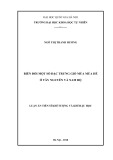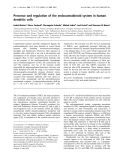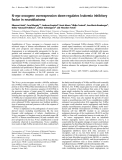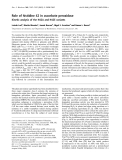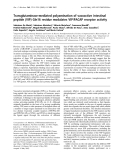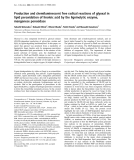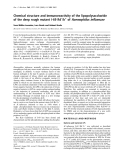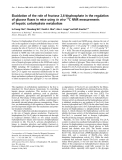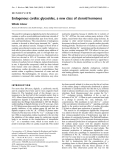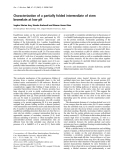
Oberkofler et al. Critical Care 2010, 14:R117
http://ccforum.com/content/14/3/R117
Open Access
RESEARCH
© 2010 Oberkofler et al.; licensee BioMed Central Ltd. This is an open access article distributed under the terms of the Creative Com-
mons Attribution License (http://creativecommons.org/licenses/by/2.0), which permits unrestricted use, distribution, and reproduc-
tion in any medium, provided the original work is properly cited.
Research
Model of end stage liver disease (MELD) score
greater than 23 predicts length of stay in the ICU
but not mortality in liver transplant recipients
Christian E Oberkofler
†1
, Philipp Dutkowski
†1
, Reto Stocker
2
, Reto A Schuepbach
2
, John F Stover
2
, Pierre-
Alain Clavien
1
and Markus Béchir*
2
Abstract
Introduction: The impact of model of end stage liver disease (MELD) score on postoperative morbidity and mortality
is still elusive, especially for high MELD. There are reports of poorer patient outcome in transplant candidates with high
MELD score, others though report no influence of MELD score on outcome and survival.
Methods: We retrospectively analyzed data of 144 consecutive liver transplant recipients over a 72-month period in
our transplant unit, from January 2003 until December 2008 and performed uni- and multivariate analysis for morbidity
and mortality, in particular to define the influence of MELD to these parameters.
Results: This study identified MELD score greater than 23 as an independent risk factor of morbidity represented by
intensive care unit (ICU) stay longer than 10 days (odds ratio 7.0) but in contrast had no negative impact on mortality.
Furthermore, we identified transfusion of more than 7 units of red blood cells as independent risk factor for mortality
(hazard ratio 7.6) and for prolonged ICU stay (odds ratio [OR] 7.8) together with transfusion of more than 10 units of
fresh frozen plasma (OR 11.6). Postoperative renal failure is a strong predictor of morbidity (OR 7.9) and postoperative
renal replacement therapy was highly associated with increased mortality (hazard ratio 6.8), as was hepato renal
syndrome prior to transplantation (hazard ratio 13.2).
Conclusions: This study identified MELD score greater than 23 as an independent risk factor of morbidity represented
by ICU stay longer than 10 days but in contrast had no negative impact on mortality. This finding supports the
transplantation of patients with high MELD score but only with knowledge of increased morbidity.
Introduction
Liver transplantation is still a complex and cost-intensive
procedure [1] and the results are influenced by many
interrelated factors. As liver transplantation has become
a universally accepted treatment for end-stage liver dis-
ease, the number of patients accumulating on the waiting
list has gradually outweighed the scarce resources of
available organs. Fair allocation of donor livers to patients
with end-stage liver disease is a difficult task. The USA
and Europe used prioritization systems based on waiting
time and on the parameters of the Child-Turcotte-Pugh
score [2]. Since February 2002, the United Network for
Organ Sharing introduced a new allocation policy for
cadaveric liver transplants, based on the model for end-
stage liver disease (MELD) score [3]. This new policy
stratifies the patients based on their risk of death while on
the waiting list [4]. The impact of MELD score on postop-
erative mortality remains elusive. There are reports of
reduced survival in groups with high MELD scores [5,6],
but also reports of no influence of MELD score on sur-
vival [7,8].
Furthermore, the unique pathophysiology of end-stage
liver disease (ESLD) has important implications on criti-
cal care treatment after transplantation [9]. Although
liver transplantation has been the sole treatment of
patients with ESLD for over 20 years, only limited data
* Correspondence: markus.bechir@usz.ch
2 Surgical Intensive Care Unit, University Hospital of Zurich, Raemistrasse 100,
Zürich 8091, Switzerland
† Contributed equally
Full list of author information is available at the end of the article





